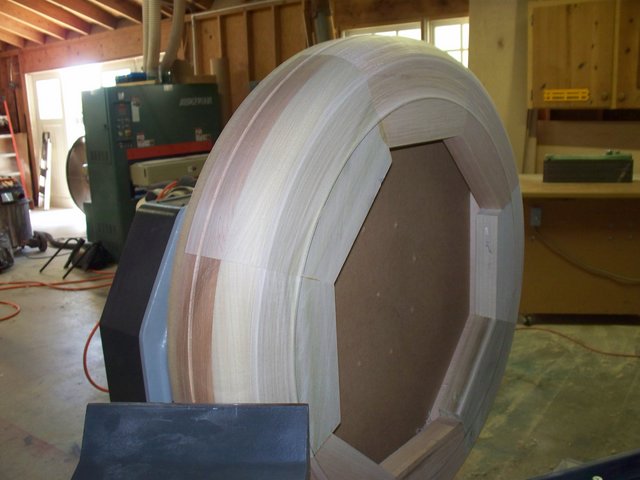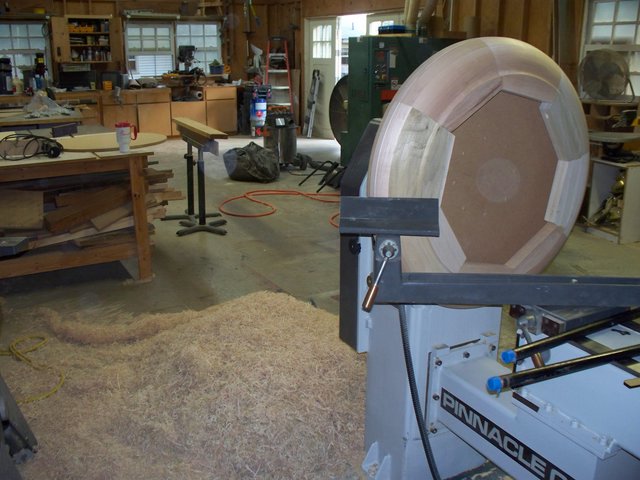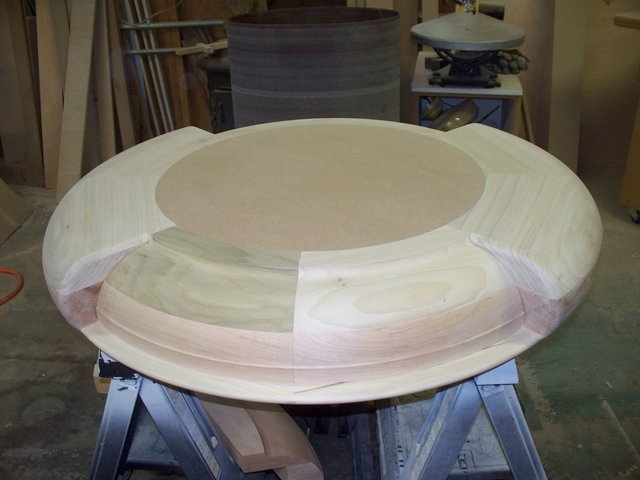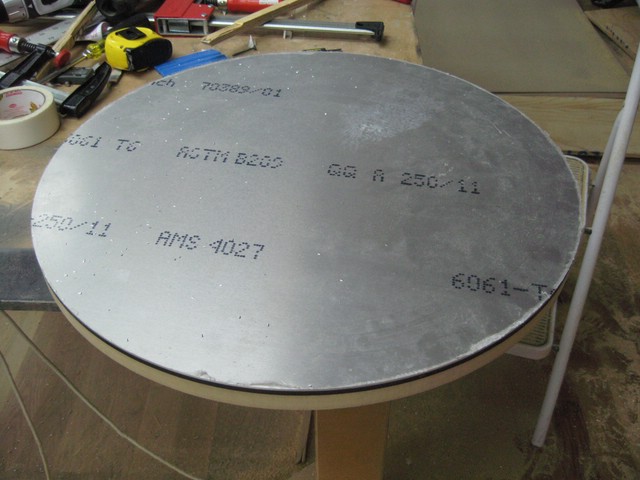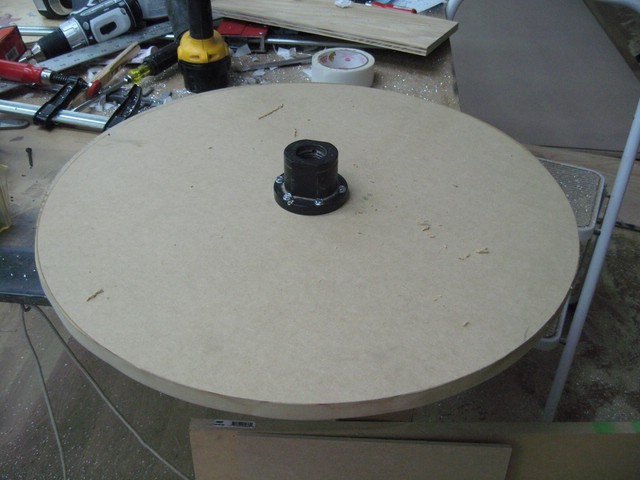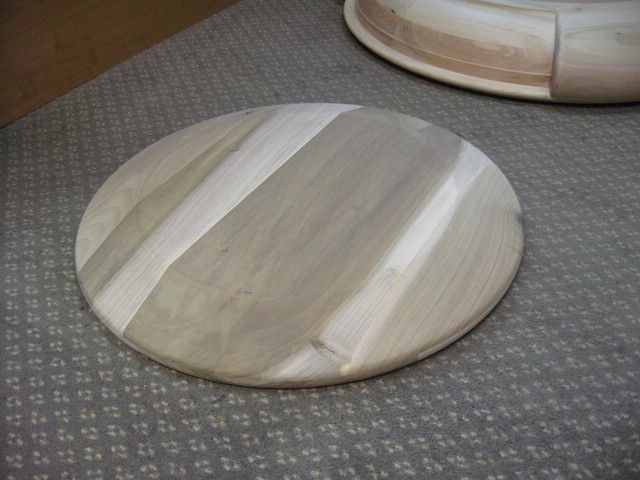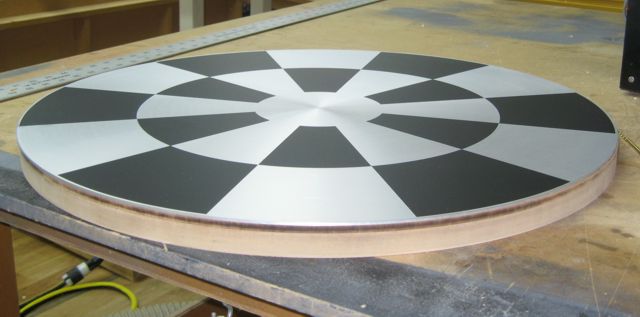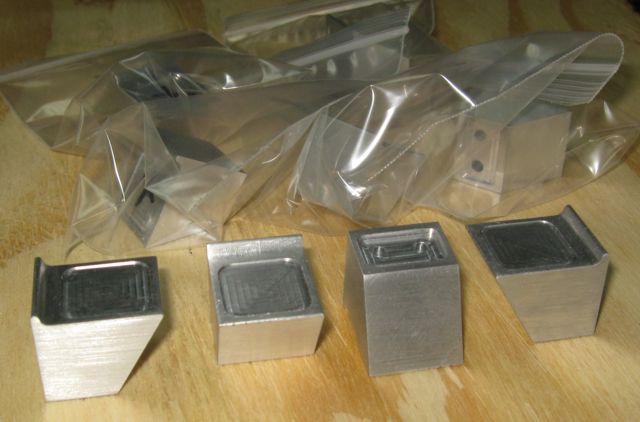After many tests for the actual grid playing surface, I've settled on using matte black vinyl stickers.
It was always going to be a sheet of 6061 Aluminum with the circular grain pattern on the surface. Actually getting to this part surprisingly wasn't as easy as I anticipated because it's a pretty large piece at over 23" diameter.
I learned quite a bit about many possible processes for the surface, almost all of which work to some extent, but in the end, only the vinyl on aluminum keep the look of the prop while providing acceptable wear capability.
Other processes tested:
Paint / laser etch: Painting the entire piece black, then lasering off the paint. This actually works very well, but in the end, the paint can be easily scratched and the aluminum will oxidize in time. Which means it really needs to be clear coated. I also did a clearcoat test, but you can clearly see the difference in thickness between the painted area and the aluminum, and it also didn't look like the prop. I could still see using this process and having automotive clear applied and buffed out for a table that might see some wear, like the one I plan to put in my office for actual use.
Anodize / laser etch: I anodized the entire piece black and then laser etched off the black dye, which also looks great, but leaves the anodizing on the aluminum. A detail on anodizing is that first the material is anodized, then tinted. You can't actually etch off the anodizing with a laser. It looks very good, you can still see the aluminum grain, but it's not metal colored. It's more of a flat white color.
Alodine / Paint mask / laser etch / Anodize: I had the bare aluminum treated with Alodine (a process that prevents aluminum from oxidizing) applied a very special anodizing lacquer paint mask to the entire piece, laser etched off the area I wanted to anodize black, and had it anodized. Good idea, bad result. The laser etching process actually burned in some of the masking material into the aluminum, so the anodizing wasn't very good, even terrible in some places.
Anodize / paint mask / laser etch / acid etch: I anodized the entire piece black, applied the masking laquer to protect the black I wanted to keep, laser etched off the mask and the black anodize dye, then they acid etched the rest of the anodize off, but the edges of the etched area exhibited a ghosting along the edge as a byproduct of the process. It looked good, except for these ghosts.
Anodize / Teflon tape mask / laser cut / acid etch: I anodized the entire piece black, applied a very special Teflon tape to protect the black I wanted to keep, laser cut and peeled off the mask, then they acid etched the rest of the anodize off. I only could source 1" wide tape for this test, but this was the best result. There were problems though. Any bubble in the masking material could allow removal of the black anodized. I also was worried that the bare aluminum would oxidize in time, as mentioned before. I did see an example of this in my test, and the 24" wide material costs $408 to buy, just pushing the total cost too high, even for this admittedly expensive project.
Alodine / Vinyl sticker: This is the one I've gone with. After graining the aluminum, I had it treated with Alodine, which as I mentioned before is a process that prevents the aluminum from oxidizing. It also gives the sticker a better surface to stick to. Then I had a matte black vinyl sticker cut and applied. This is definitely the closest appearance to the prop, will probably wear better than the other methods, and for all we know, might be exactly the same way the prop was done.
Here it is:

